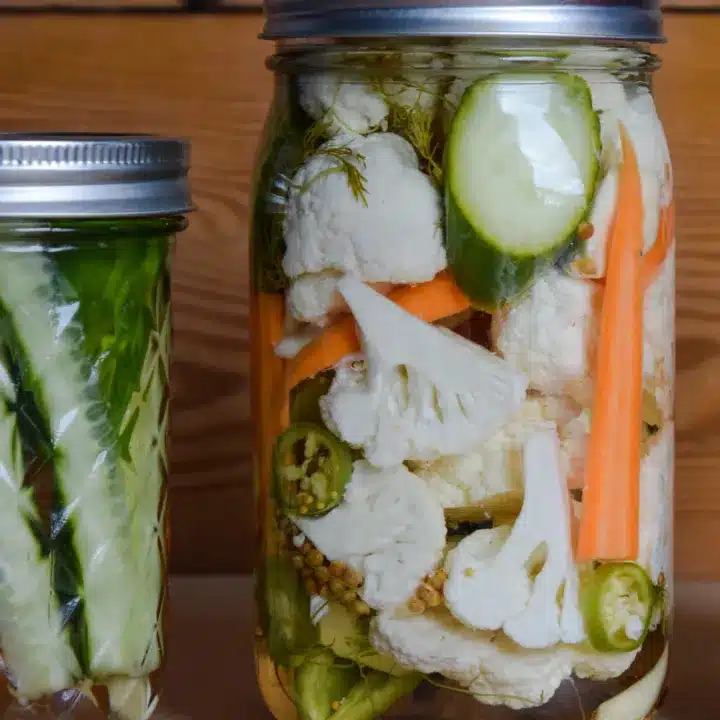According to Mark Twain, “cauliflower is just cabbage with a college education”. Twain may have been onto something as they are close relatives in the brassica family. While we also love cabbage, cauliflower has been in the spotlight these past few years due to its ability to transform and adapt to nearly any dish.
In the Garden

Growing cauliflower is not for the faint of heart. It can be challenging because it requires cool temperatures like its cabbage-relatives. If the temperature becomes too warm, the crop may prematurely form small, button-size heads instead of a large, single one. It also requires patience as cauliflower heads are ready to harvest 2-3 months from planting.
Cauliflower grows best as a fall crop but can be planted in the spring too. Seeds can be started indoors about 4-6 weeks prior to the average first frost and after temperatures are regularly below 75 degrees. Because cauliflower doesn’t like having its roots disturbed, seeds are best started in biodegradable pots. Plant seeds about ½ an inch deep. Keep the soil moist and the seed starts warm so that they sprout quicker.
Hardening the plants over a week or two before transferring them to the garden can be helpful. Plant cauliflower starts in full sun about 18-24 inches apart with 30 inches between rows. Water regularly with 2 inches of water per square foot every week. Harvest when the cauliflower heads are compact, white, firm, and 6 to 8 inches in diameter. Learn more about growing cauliflower at the Farmer’s Almanac.
In the Medicine Cabinet
Cauliflower is brimming with nutrients including Vitamin C, Vitamin K, folate, and potassium. Like its brassica relatives, this vegetable is also an excellent source of fiber and antioxidants.
Different varieties of cauliflower have different antioxidants, a substance that protects cells from damage caused by free radicals.
- Graffiti, Purple Cape, and Sicilian Violet are all varieties of purple cauliflower and contain anthocyanins, a group of antioxidants that give plants their red, blue, and purple color.
- Alverda and Vitaverd have vibrant green heads and get their antioxidant properties from carotenoid pigments.
- Xanthophylls are the class of pigments that provide white and yellow cauliflower varieties with antioxidants.
In the Kitchen
Is there anything cauliflower can’t do? This versatile vegetable can take on many forms and flavors. It can be made into gnocchi, pureed into a creamy soup, roasted whole, added to curries and stir fries, turned into rice, substituted in pizza crust, and much more. Here are 8 recipes we love that feature cauliflower:
- Roasted Cauliflower Salad
- Walnut Cauliflower Taco Meat
- Cauliflower Rice
- Whole Roasted Cauliflower
- Cauliflower Gnocchi
- Roasted Cauliflower Soup
- Buffalo Cauliflower Wings
- Cauliflower Curry
If you are looking for a way to enjoy cauliflower raw, we recommend trying our recipe below for Quick Pickled Cauliflower.
Quick Pickled Cauliflower

Crunchy, tangy, salty, and very refreshing, these pickles are great on their own or as a topping for salads and sandwiches.
Ingredients
- 4 cups sliced vegetables (cauliflower, carrots, cucumber)
- Fresh dill
- Sliced serrano peppers (optional for spicy pickles)
- 8 cloves garlic, peeled
- 1 Tbsp coriander seeds
- 1 Tbsp black peppercorns
- 1 tsp yellow mustard seeds
- 2 cups vinegar of choice or a mixture (white, red wine, apple cider vinegar all work well)
- 2 cups water
- 1 Tbsp kosher salt
- 3-4 Tbsp sugar
Instructions
- Divide the coriander seeds, black peppercorns, and mustard seeds evenly among your jars or glass containers. Add in the garlic, dill, and sliced serrano peppers if using. Pack your sliced vegetables into the jars.
- In a medium saucepan, add vinegar, water, salt, and sugar. Bring the mixture to a simmer over medium heat and stir until sugar and salt are fully dissolved.
- Carefully pour the hot brine over the vegetables, making sure all vegetables are submerged, adding a bit more water or vinegar if needed.
- Seal well and shake to combine. Allow the jars to cool on the counter for an hour or two before putting them in the fridge. Pickles will be ready to eat after about 8-10 hours but will taste best in a few days. They will keep in the fridge for 2-3 weeks.
Notes
You will need 2 glass quart jars with tight-fitting lids for this recipe.